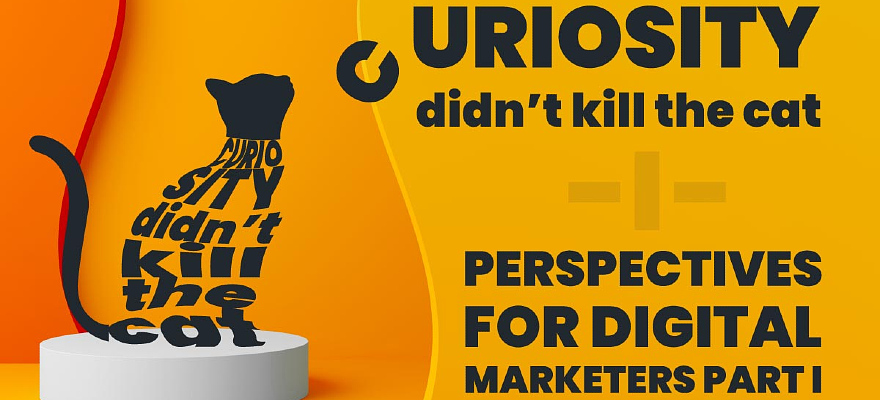In WW2, after the Allied Forces won back the European territories, they moved on to deal with Japan. Trying to avoid futile bloodshed, they’ve asked, during the Potsdam Conference, for unconditional surrender. Following this, the Japanese mass media requested a reply from their Prime Minister, and the only word he articulated was “mokusatsu”.
As with any language, words tend to have multiple interpretations, depending on the context. If adequately translated, this word would’ve delivered a neutral message: “No comment”. However, the sad part is that the word was mistranslated, namely “not worthy of comment”, and everyone knows what came next. This is now known as “the world’s most tragic translation“.
Errors in judgment: placebos and “quick fix” solutions
Moving past this most unfortunate mistake, it would seem that human minds tend to link every aspect directly to outcomes. They follow specific patterns, and when contextual clues enforce these patterns, their combination or combo sometimes leads to poor decision-making. I’m going to call these reasoning paths’ biases‘. Whenever a human tries to solve a problem, the first thing they do is rapidly assess the situation, compare it with whatever their memory brings out first, and then make quick decisions based on past experience. Because of contextual familiarity, we always favor approaches used in engineering, technology, or legislation.
Say we feel ill. The quick fix is taking some pills, which our brain recognizes as efficient. The second quick fix is to think back and identify the most probable causes which made us feel sick. Before going further, let me be clear: the paths we take in our decisions aren’t wrong; it’s simply that, at least sometimes, using a new route or testing new solutions may prove to be equally effective or better.
Placebos, for example, have been proven to be quite efficient from a treatment standpoint. From a behavioral perspective, when presented with a purchasing decision, we always tend to pick the expensive option. It doesn’t matter whether it costs ten times more than the alternatives. Moreover, when taking them, we instantly feel like we’re getting better simply due to the” logical choice” we have made.
Suppose the pills come in a green package. In that case, our brain usually associates this color with grass, trees, coming to life, getting better, or maybe for current generations – with heroic superpowers, and we make the purchasing decision based solely on whatever our brain is familiar with – this is how product marketing works these days.
From another point of view, let’s look at top management, which needs to make decisions daily, often with far-reaching consequences. Their most common approach is to base their decisions on aggregated data. It doesn’t matter if the data is faulty or if the data collector/analyst is biased due to (some) specific data. All that matters is that top management’s decisions are ‘data-driven’.

All of these are placebo-like behaviors. The placebo effect or perspective sounds quite appealing: it’s effective, credible, and can always be defended (from a logical point of view). Any side effects are ‘in our heads’, so we can safely disregard them. My point here is the following for marketers: unless we try reframing the way we think, there will always be solutions eluding us, and we will always go for the easy, often placebo answer.
Unless we understand where the standard thought process is being anchored or what was the nudge that pushed us into making a decision, we’ll hardly find the best way to interact with our audience. Our audience values how they interact with us and how comfortable the entire process is.
In my earlier historical example, I mentioned the legislative bodies’ perspective, and they’re maybe the best sample of the low-scale working communication technique, to put it bluntly. However, that’s not the only time we’ve seen it in action, and it’s still very much standard practice.
For example, in our corner of the world, we’re now experiencing a census year, and all citizens must provide personal data related to identification, location, and family composition details. The first thing the government did was publish a laundry list of ‘advisory’ articles focused on the vast fines everyone who will not comply is to expect. Fear is, of course, a great motivator; however, the persistence of fear might yield the opposite effect: after a while, people tend to respond to aggression with escalated aggression.
- An efficient alternative would be to make the entire experience faster and more pleasant. Active, socially-aware individuals have little patience for useless, complicated procedures and wasted time; therefore, an upgrade of online governmental systems would greatly help convince people to subscribe to their data (…just a thought!).
- Expediting the entire process by way of streamlining questions would also be a great idea. When we combine these two ideas, I bet the results could prove to be a bonanza of data collection since, let’s be real – we are coming out of a 2+ year-long restrictions period, so spending time outside our homes is very high on the wish list.
Instead of hiring an army of field data collectors to walk from door to door and collect the information, a more approachable solution, at 10% of the costs, would be to organize a concert, a raffle, or a similar type of social event, and offer a prize for census cooperation. People would respond accordingly since seeking instant gratification is in our genes. It has been proven that nudging people’s behavior toward a particular outcome is a better alternative than the standard one, which is coercion.
Not pointing any fingers, though; the entire system is based on “rational justification” for every step. People tend to always go for solutions that offer reliable means to justify their jobs, salaries, well-being, etc. So, by taking the concept of rational justification into the context of advertising, the industry has realized to focus on a few things – how customers have adopted this mindset for everyday actions, what it means for this industry and practice in general, and to what extent has technology played a part in this.
Engaging customers and creating sales journeys
We believe there have been three notable advancements in the last decade. The first is how digital media has reshaped human interaction, specifically how we engage with people’s behavior. It now has the potential to go either terribly wrong and get the worst out of people or empower the achievement of some fantastic things. It’s the classical choice of free will.
The second advancement is that digital marketing has shifted its approach from the standard ‘product push’ of selling packages to the actual nature of the product through a behavioral adjustment. Marketers are now more interested in creating contexts, coherent narratives, and feeding action-oriented attitudes very contextually close to the moment the decisions are made.
It is a radically different decision compared to the classic approach, whereby messages were focused on a customer’s take while they were distant onlookers. Nowadays, marketers focus on customers while they find themselves actively involved in a purchasing event in real time.

Say I have to travel to a distant location. I might face the dilemma of traveling by car, bus, or train. The moment I set up the alternatives, my brain starts filling in a pros and cons list. Should I drive my car, listen to some excellent music, have a snack, maybe sip from a cup of marvelous coffee, or do I locate a taxi, go to the train station, pay money for tickets, haul my keister out and hurdle through, luggage and all, on to the designated station platform?
If I also happen to have kids, then this decision has already been made for me by default because I’ve already packed the car up with about 10 tons of stuff; let’s be honest, I’d be hard-pressed to make it in time for the train, while the comfort provided by my personal vehicle will always win.
That being said, if I have to visit several venues in different states/counties/regions, the train can become a 100% viable solution IF it provides the same comfort or ease of access as a car. How, you may ask? Well, if I am allowed to change the train I have bought a ticket for or if I can reschedule the booking for a different train in real-time, on the same day, we’re already looking at a deal. Therefore, the key concept here is offering users easy access to technology, especially in the critical moment of purchasing.
Returning to our original points, we have fundamentally rewired the paths people follow in using technology to change the place where decisions are being made. This leads me to the third advancement: persuasive marketing and the rise of behavioral economics & technology.
Behavioral sciences – new formula, now contains marketing additives!
The most exciting thing with behavioral economics, in simple terms, is that everything surrounding you – the context, the environment & the interface, creates a mix that has a more significant effect on the decision you make than the long-term consequences of a decision, even when we know what those consequences are/would be.
For example, if you’re Dr. Evil, you can get people to buy ten years’ worth of warranties even if they’re steadily reaching the age of 90; alternatively, you could make accountants take training in website design only by identifying the context in which they’re most susceptible to take decisions and then nudging them in that direction, regardless of whether this is a good investment for them or not.
Now let’s take another example, an everyday one. Imagine planning a night out with your better half and friends. You spot a more upmarket restaurant, and as you find a table, you notice the waiter bringing over a few glasses of wine. Afterward, he hands your group a drinks list which often tends to be a wine list containing 100 or more types of wine.
If you’re like me, you’re on good terms with Jack Daniels and not so much with others. As such, you might hold out some hope that they may have some other beverages aside from their assortment of wine. However, when the waiter throws out the question, “What may I get you from this list?” you know it is checkmate for those who would prefer literally anything else. This is just a minor example, but it proves a poignant point of how businesses can hack you into doing things you’d otherwise not do.
Our digital marketing experience has proven that many things in life, especially those involving psychology and human perception, don’t always mix very well with immediate and obvious solutions. Humans find themselves on a scale of varying shades of gray, sometimes dabbling into strict black & white answers. If you’re inexperienced in human behavior, sending an audience improper nudges can screw things up for good…at least for you.
In many cases, those businesses that make the most profit aren’t necessarily the most profitable. Successful companies follow an idea and try to motivate or change for the better of a specific population segment. When entering the game of behaviors, you have to accept that the concept of “value” is subjective – everyone perceives and understands it differently. Therefore, what works for you won’t work on many. Our perception of value is backed up by two million years of evolution, and this is enough time to make us very wonky or asymmetrical if you’d like.

Increasing product/service appeal through complementarity
Traditionally, digital marketing is assimilated under the advertising umbrella, and it’s defined as a process through which one creates complementary goods. Digital marketing means creating something through entertainment, media, or communication or sometimes through adding a new feature/service.
For example: if you’d like to sell a burger, you can do so for a meager price. If it’s a bare-bones one: only the buns and a meat patty in between. If you add lettuce, tomatoes, some ketchup, some other spices, and a few fries, you can get an excellent price, right? My point here is that through the creation of complementary goods, the main product’s appreciation will rise, enabling the opportunity for a higher price.
Here’s another example to showcase the power of complementary goods. Think of Chateau Lafite, one of the world’s top wines. You go to France, see the vineyard, learn its history, maybe add a delicious meal to the equation, and enjoy a delicious glass of this wine to top everything off. A great experience, isn’t it?
You decide to re-live this event and get a store-bought Chateau Lafite back home. You eagerly open it, pour yourself a glass, and then it suddenly hits you: this second-hand beverage cannot possibly be the same thing I had in France. The taste is nowhere near the same; however, factual reality says it is. That is when you realize the wine wasn’t creating that experience in France – it was all of it, from the venue to the food. All of the complementary parts played an equally important role.
If you think about it, the effects of complementarity show how the base product isn’t often enough to create an impulse in customers. Layout and packaging are informational components that add tremendous perceptual value to distribution. If you sit down and have a burger, you’re enjoying the product in its totality: meat, buns, awesome fries, ketchup, some veggies, AND the packaging. Yes, you read that right. While you may not be eating the packaging, the build-up it creates until you enjoy the product often significantly increases your pleasure once you begin feasting.
In other words, complementarity enhances totality, creating value more convincingly than any advertising solution for the stand-alone, bare-bones product. Find out more about this in part TWO of this series!


